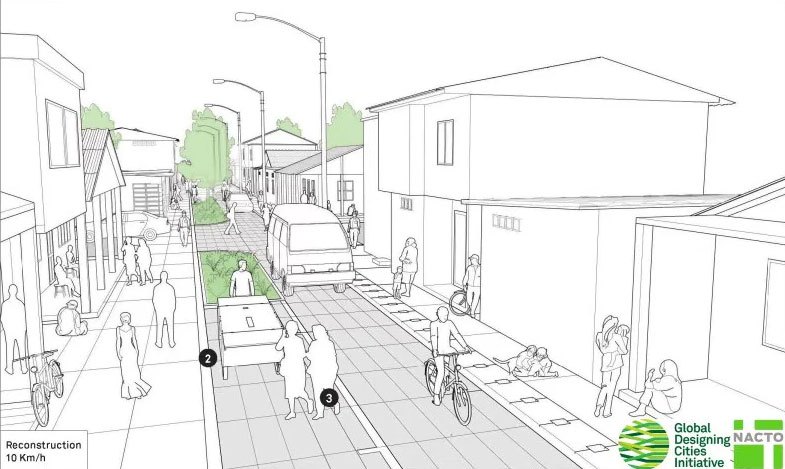As of this week, the Global Street Design Guide, a handbook for cities around the world to design safe, sustainable streets, is available to the public as for free online.
The guide was first released last October after two years in development by the Global Designing Cities Initiative, a project of the National Association of City Transportation Officials, which represents big-city transportation departments in the United States. The 400-page document, also available for purchase as a $50 hardcover, is currently only in English. Translations will soon be released in Spanish, Portuguese, and Chinese.
The document is a compendium of best practices from cities around the world for designing streets that prioritize walking, biking, and transit while minimizing crashes and injuries. Created with the input of transportation officials in 72 cities across 42 countries, the handbook includes 21 street typologies, 50 different street and intersection treatments, and 40 case studies. It covers a wide range of topics, from bike lane design to working with underground utilities.
“This guide proposes designs that can work in cities from Mexico City to Mumbai, from Amsterdam to Addis Ababa," NACTO chair Janette Sadik-Khan said at a launch event in New York Tuesday evening. "It accounts for everything -- and I mean everything, from street vendors to rickshaws."
The guide was funded by Bloomberg Philanthropies, which has made road safety a top priority. In addition to serving as NACTO chair, Sadik-Khan, who served as New York City transportation commissioner during the latter half of the Bloomberg administration, is a principal at Bloomberg Associates.
The guide has been endorsed by 29 city transportation departments, including those in London, New York, Mexico City, Stockholm, and Nairobi. The manual is also endorsed by 15 NGOs, including the World Bank, the Inter-American Development Bank, and the Institute for Transportation and Development Policy.




